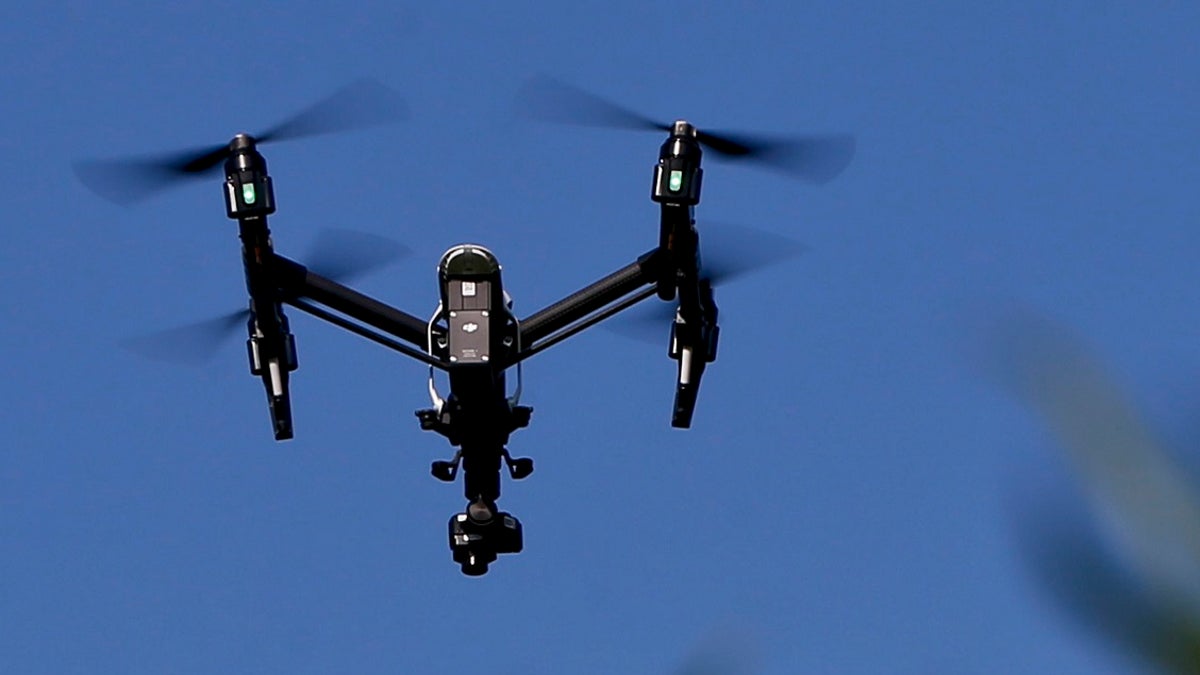
A drone equipped with a thermal camera is seen in this file photo. (Associated Press)
CANBERRA, Australia—Robyn McIntyre, who lives on the outskirts of Australia’s capital, was in her family room a few months ago when she thought she heard a “chain saw gone ballistic.”
It was actually a drone on its way to deliver a burrito or coffee as part of a test from Wing, which like Google is a subsidiary of Alphabet Inc. One recent day, she said delivery drones flew over her house about 10 times in 2½ hours, making it difficult to focus on working or reading the newspaper.
“There’s one!” said Ms. McIntyre, 64 years old, drinking tea in her living room on a recent Saturday morning. “Oh no, it’s a blowfly. See there, it’s gotten into my head. Every time I hear a high-pitched noise, I think it’s a drone.”
Drones could someday revolutionize e-commerce by cutting delivery times, reducing energy use and lowering costs. For now, they are dividing neighbors in the suburban neighborhood of Bonython, where one of the world’s most advanced drone-delivery tests has taken flight.
'TECH ADDICTS' SEEK SOLACE IN 12 STEPS AND REHAB
Tech companies are tinkering with drone deliveries all over the world. Wing is a step ahead of some by routinely bringing everyday items to customers in an entire neighborhood. Residents can use a smartphone app to order food, hardware supplies and over-the-counter medications from half a dozen retailers. Next year, Wing hopes to move the trial to another part of Canberra and plans to begin a similar test in Finland.
Some residents don’t use their yards as much because of the noise. Others say they’ve seen magpies, famous for swooping at pedestrians and cyclists in the spring, do the same to drones. At a local dog club, some members are avoiding an area near where the drones take off because dogs can get nervous, says the club president. For some residents, it’s a small-scale version of the misery heaped on travelers at London’s Gatwick airport, whose holiday plans were ruined by mystery drone incursions.
Irene Clarke, who is Ms. McIntyre’s neighbor, gets up to 10 deliveries a day. After she discovered that her sunscreen was out of date, she ordered a replacement via drone so she could quickly lather up her three young grandchildren. It arrived within seven minutes.
Ms. Clarke, 64, calculates it would have taken 25 minutes to get the children in the car and make the round trip to the shopping center. Some people may not like the drone service “because they’re not using it,” said Ms. Clarke, adding that none of her neighbors have asked her to stop getting deliveries.
The convenience isn’t swaying members of Bonython Against Drones, a group of residents “united against noisy, intrusive, unnecessary drones,” according to its Facebook page. The organizers recently submitted a petition to the local legislative assembly. Politicians voted to launch an inquiry into drone deliveries and a committee will produce a report on the trial’s environmental and economic impacts.
PEOPLE ARE TEXTING THEIR EXES AND BUYING STUFF IN THEIR SLEEP
“It is a suburb surrounded by bush,” said Nev Sheather, 68, who opposes the trial. “It is normally a very peaceful, quiet place. We have kangaroos hopping literally in the street.”
Laura Edwards, 32, hasn’t used the drone service, but she returned home after a weekend away to find two hot chocolates in front of her house, still in the aerodynamically shaped box that Wing uses for delivery. One had mostly leaked out, requiring her husband to hose down the driveway.
“I just felt angry, because I thought, ‘Really? We have to clean this up,’ ” said Ms. Edwards, who posted about the incident on social media but didn’t file a formal complaint. An investigation by Wing later determined the hot chocolates had been left at the wrong house because a customer selected the incorrect address.
Click here to read more from The Wall Street Journal, where this article was originally published.




















